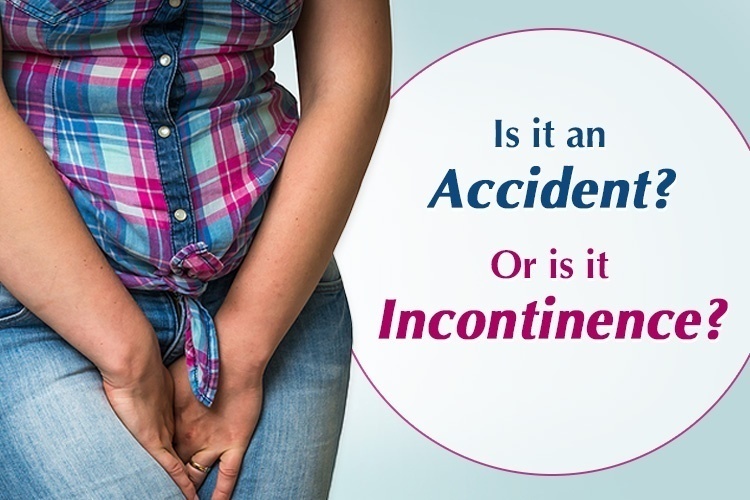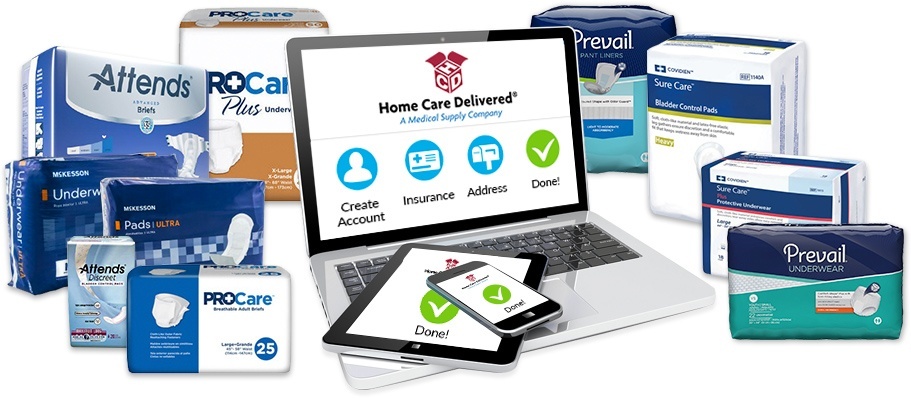Is it an Accident or Is it Incontinence? How to Tell When a Little Pee Is More Than Just a Little Annoyance.
This post was reviewed by our Director of Clinical Excellence and Oversight.

The Stats
Even though you don’t usually hear a group of friends sitting around discussing their incontinence issues, chances are, if the group of friends is a group of women, at least 1 in 4 will be silently wondering if she may need to run to the restroom. If that group of women friends is over age 65, 3 out of 4 may have incontinence on their minds.

And it’s not just women who have bladder control problems, men have it too. According to a study by the National Institutes of Health, urinary incontinence (UI) affects a substantial proportion of men: as many as 11% among those aged 60 to 64 years and 31% of men older than that. And did you know that race plays a part? Statistics show that the rate of incontinence is approximately 16% among white men and up to 21% among African American men.
Types of Incontinence
If you are concerned about wetting your pants, you may not be all that interested in the different reasons why it happens. You probably just want it to stop…or at least you want to be protected when it does happen.
But understanding the different types of incontinence may help you figure out what steps you can take to keep yourself protected and when it may be time to see your healthcare professionals.
There are four main types of incontinence:
Stress incontinence is probably the type of incontinence most people think they have, and it is the most common type. Stress Incontinence occurs when weak pelvic muscles let urine escape before the person is ready to let it go. This is what is going on when you leak when sneezing or laughing, or when the bouncing associated with exercise causes a few drops to escape. The amount of urine released can be just a little or it can be pretty severe, if you know what we mean.
There are ways to manage your stress incontinence. You might have heard of Kegel exercises, which help strengthen the muscles that hold the pee in. Read our blog, Incontinence: Stay Strong, Stay Positive… Stay Dry, for other ways to DIY. If DIY isn’t your thing, or isn’t working, see your healthcare professionals. They may have additional suggestions for how to keep yourself dry and protected.
Overactive Bladder happens when your bladder muscles are too active. It may be because your brain tells your bladder to empty even when it isn’t full and you aren’t ready for it. Or it may be because your muscles contract to allow urine to pass before your bladder is full, causing an urgent need to urinate.
A sudden, urgent need to urinate is the main symptom of overactive bladder. Another way to judge if this might be what you have is by how many times a day you need to run to bathroom. If it’s a lot and happens all day and all night, you may have overactive bladder.
Overactive bladder is more likely in men with prostate problems and in women after menopause. It can be caused by age or even by what you eat. Some people may have both stress incontinence and overactive bladder at the same time.
Overflow Incontinence is more common in men with prostrate problems. It happens when the body makes more urine than the bladder can hold, or the bladder is full and cannot fully empty thereby causing it to leak urine. Sometimes there is something blocking the flow, or the bladder muscle may not contract as they should. If you are experiencing the sensation commonly known as “dribbling,” then overflow incontinence may be to blame.
Functional Incontinence happens when there is a reason outside of your urinary system for the leak to happen. Maybe you have arthritis and can’t get the button on your jeans open quickly enough. Or maybe you have a habit of waiting a little too long to get yourself to the bathroom. If you suspect you have functional incontinence, take steps to lessen the triggers that make it happen. If arthritis is causing you to slow down, for example, pants with an elastic waistband might be your friend in this situation.
You Can with Incon
Having incontinence can be disruptive to a person’s life. It may cause someone to stop doing the things they like to do or cause them to waste precious moments of their lives worrying about when the next accident will happen.
But it doesn’t have to be like that. DIY plus help from your doctor plus the right products can make all the difference in your confidence and security.
That’s why the team at Home Care Delivered created the “I can with Incon” campaign. Our goal is to remind you that you can do all the things you love to do, no matter what kind of incontinence you have. We are committed to helping people with incontinence live their lives with dignity and security. That’s why our customer service representatives are experts at helping people facing incontinence find the right product for their needs.
Here’s a secret that most people don’t know: it isn’t just the product you use that matters when it comes to being protected against incontinence leaks. You also need to match the right type of product with the right fit and the right absorbency level. Customers getting their incontinence products from HCD can be assured that our reps understand the right questions to ask in order to find this perfect match for every customer.

HCD Can Help
HCD has been delivering incontinence supplies in discrete packaging for 25 years. Read about how we got our start and then discover how we work through your insurance benefits to get you the incontinence supplies you need to feel protected and confident. Not only that, we contact your doctor’s office and handle all the paperwork for you, making it easier than ever to take care of yourself. Give us a call at 866-755-1431 or click on the link in the bottom-left corner to have one of our amazing customer service representatives call you. We look forward to helping you say, “I can with incon.”

Get Incontinence Supplies Online With Medicaid
No Credit Card | Fast Delivery | 100% Discreet

Disclaimer:
Unless otherwise noted, the recommendations in this document were obtained from the sources indicated. Be advised that information contained herein is intended to serve as a useful reference for informational purposes only. HCD cannot be held responsible for the continued accuracy of or for any errors or omissions in the information. All trademarks and registered trademarks are the property of their respective owners.
